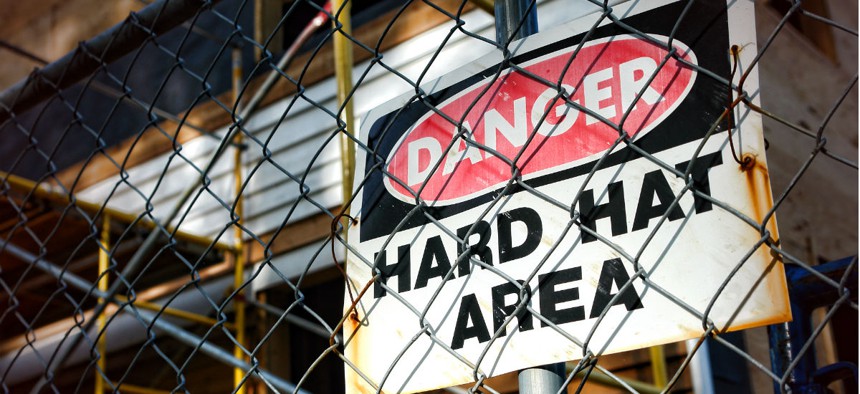Trump Deregulation Expands to Workplace Fatalities, Gender Pay
Agencies are told to curb data reporting to reduce the paperwork burden.
In evaluating agency programs, the Trump administration is continuing its predecessor's emphasis on “evidence-based” decision making. But when it comes to requiring data reporting from the private sector, its agenda assigns a higher priority to easing the regulatory burden on companies.
The past week brought trims in Obama administration industry reporting requirements on workplace fatalities monitored by the Occupational Safety and Health Administration as well as cuts in gathering race and gender pay data compiled by the Equal Employment Opportunity Commission.
Implemented by acting agency heads installed by President Trump, the policy changes were welcomed by business lobbyists and bemoaned by liberal policy activists.
At OSHA under President Obama, details of workplace fatalities that included names, employers and circumstances were regularly posted on the agency’s website, as noted this week by the Wall Street Journal. But the U.S. Chamber of Commerce complained to the agency that such reporting was a paperwork burden that unfairly required businesses to divulge confidential information that could aid competitors and embarrass them before the deaths had been investigated.
So OSHA, now headed on an acting basis by Capitol Hill veteran staffer Loren Sweatt, who is deputy assistant Labor secretary, re-worked the OSHA presentation to provide less detail and less frequent releases. An OSHA spokeswoman told the Journal the new approach that omits the names of deceased workers protects the privacy of surviving family members.
On Tuesday, Neomi Rao, administrator of the White House Office of Information and Regulatory Affairs, sent EEOC Acting Chair Victoria Lipnic a directive on pay data concerning reporting on race, ethnicity and gender.
“After careful consideration and consultation with the Equal Employment Opportunity Commission, and in accordance with the Paperwork Reduction Act [and its regulations], the Office of Management and Budget is initiating a review and immediate stay” of “requests for data on wages and hours worked from employers with 100 or more employees, and federal contractors with 50 or more employees.”
The specifications for new reporting requirements during the Obama administration were not properly established with sufficient public input, she said.
On the substance, “OMB is concerned that some aspects of the revised collection of information lack practical utility, are unnecessarily burdensome, and do not adequately address privacy and confidentiality issues,” her letter said.
So OMB restored the requirement to an earlier version of the reporting form pending results of its review. In a statement, acting chair Lipnic said, “The EEOC remains committed to strong enforcement of our federal equal pay laws, a position I have long advocated. Today's decision will not alter EEOC's enforcement efforts.”
She said she hoped the decision will prompt a discussion of other more effective solutions to encourage employers to close the wage gap.
The change was welcomed by Randy Johnson, the U.S. Chamber's senior vice president for labor, immigration, and employee benefits. “The fact that the burden estimates were so defective was particularly unacceptable given the lack of utility of the information being collected by EEOC,” he said, noting that the data cells in the Obama-proposed form were much expanded. “EEOC estimated the total burden for reporting employers at $53.5 million per year, while the Chamber's estimate was $1.3 billion—over 20 times as much—and all the while, EEOC conceded that such information would not be useful in identifying pay discrimination.”
Amit Narang, regulatory policy advocate for Public Citizen, told Government Executive that “these measures create data reporting black holes that make it impossible for our government to enforce safety and anti-discrimination laws against unscrupulous employers. If these actions stand, it will not only fundamentally undermine OSHA and EEOC enforcement in this administration, but the complete lack of data will make it harder for those agencies to get back to enforcing the law in future administrations.”
NEXT STORY: Want to Make Smarter, Faster Decisions?








